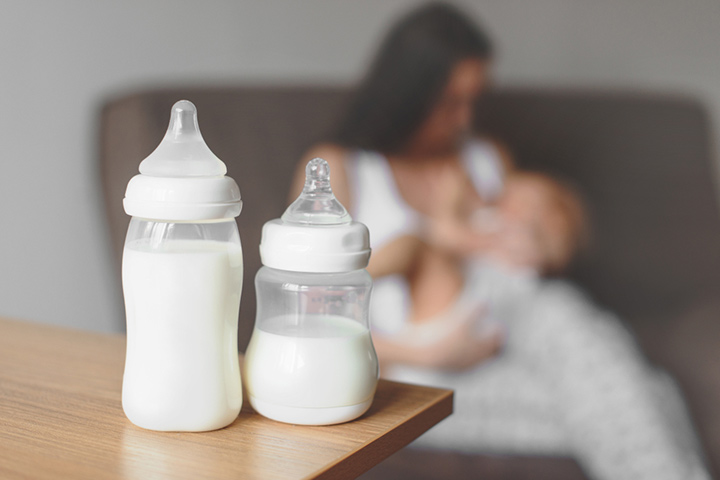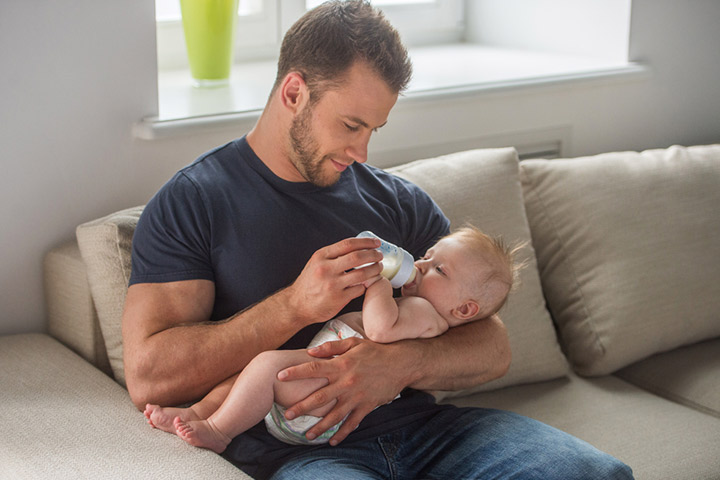
Image: Shutterstock
Just like some moms struggle with breastfeeding their baby, getting your baby to feed from a bottle can be tricky at times. After all, your baby is used to feeding from a warm and snuggly source all this while, a bottle might not look as appealing to them. But for moms who are getting back to work and who want to sleep through the night while their partner pitches in with nighttime feedings, a bottle might be your only option. And while some babies take to a bottle pretty quickly, for others it might be a lot of trial and error until it finally works. Below, we list down 7 tips that will help your baby adapt to this new feeding system.
1. Take Your Time
Image: Shutterstock
Discuss with your lactation consultant or doctor on when would be an ideal time to introduce the bottle to your baby. For moms who are going back to work, it would be best to start bottle feeding 2 weeks early to help your baby adjust.
2. Offer A Bottle When Your Baby Is Rested And Happy
Image: Shutterstock
Let your baby take his/her own sweet time to get used to the bottle. They will try a few sucking motions before they get used to the bottle’s nipple. You don’t want to introduce a new feeding system when your baby is fussy and cranky. So pick a time when they are happy and well-rested, probably after a feeding session. Instead of overwhelming them by giving a full bottle of breast milk, add an ounce of milk in the bottle. Let them play with the bottle and be familiar with the nipple. You can also dip the nipple with some breast milk to increase the chances of your baby sucking on it.
3. Choose The Right Feeding Bottle
Image: Shutterstock
Feeding bottles come in different shapes and sizes. You also get a variety of nipple shapes and sizes from different brands. The hole at the tip of the nipple determines the flow rate of the bottle. It is best to go with a bottle with a smaller hole that provides a slower flow rate to make the transition from breast to bottle easier for your baby (3).
4. Let Someone Else Do It
Image: Shutterstock
It can be confusing for your baby to see you feed from a bottle when you’ve been breastfeeding all this while. They are familiar with your smell and touch and may resist feeding from a bottle. So it might be best to let someone else such as your partner or caregiver take over and feed your baby until your baby is used to the bottle.
5. Lookout For Hunger Cues
Image: Shutterstock
Unlike us adults who’ll gobble down anything when hunger strikes, babies tend to get cranky. Try to stick to the same schedule you followed while breastfeeding and look out for hunger cues. Make sure you have the milk ready in a bottle to feed the baby when they seem hungry. You can also try squirting a little breast milk into their mouth to get them excited about feeding.
6. Go Slow
Image: Shutterstock
Don’t rush it and take your own time to help your baby adapt to this new feeding system. If your baby refuses to feed from a bottle the first time, wait for a few minutes before you try again. If your baby seems finicky, try to distract or soothe them before you offer them again. Don’t worry if you don’t succeed in your first few attempts. Breastfeed your baby and try again when they look happy and satisfied.
7. Customize It For Your Little One
Image: Shutterstock
Some babies prefer slightly warm breast milk than cold. Some moms serve the milk cold and others make sure it’s at room temperature before offering their little ones. If your baby doesn’t like cold milk, you can warm it up by running it under slightly hot tap water. Try experimenting with different temperatures until your picky eater finally drinks up.
Here’s hoping that your baby drinks your milk from a bottle right away. But if it turns out to be more challenging than you thought, keep trying and don’t give up. Have patience and try different tips to find what works best for your little one.




















